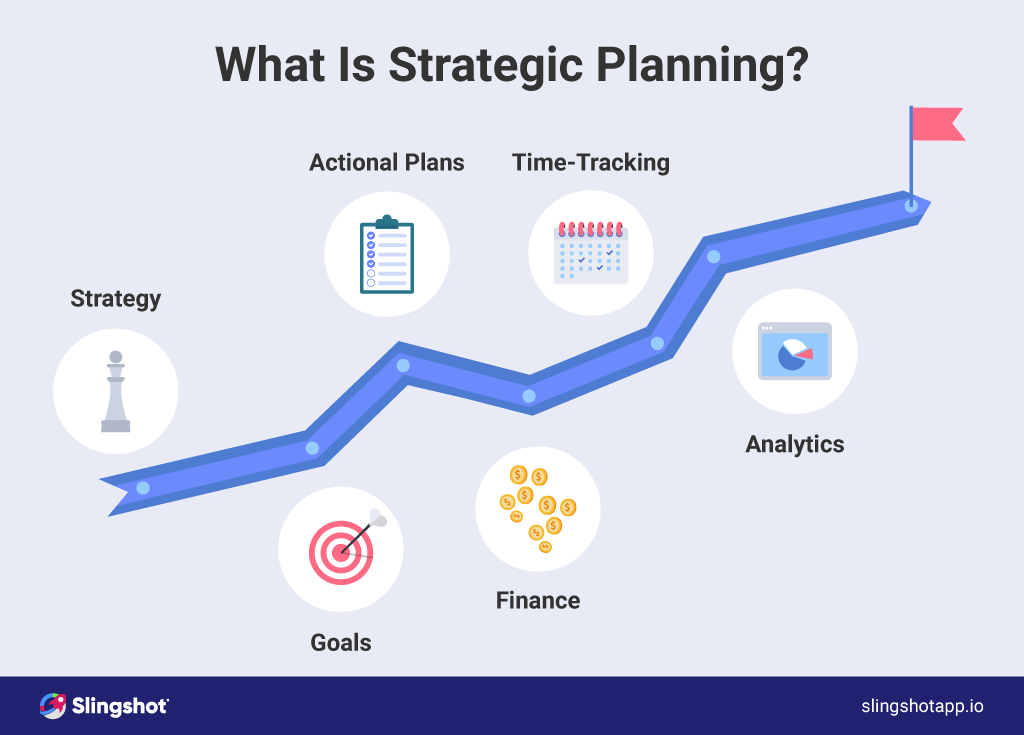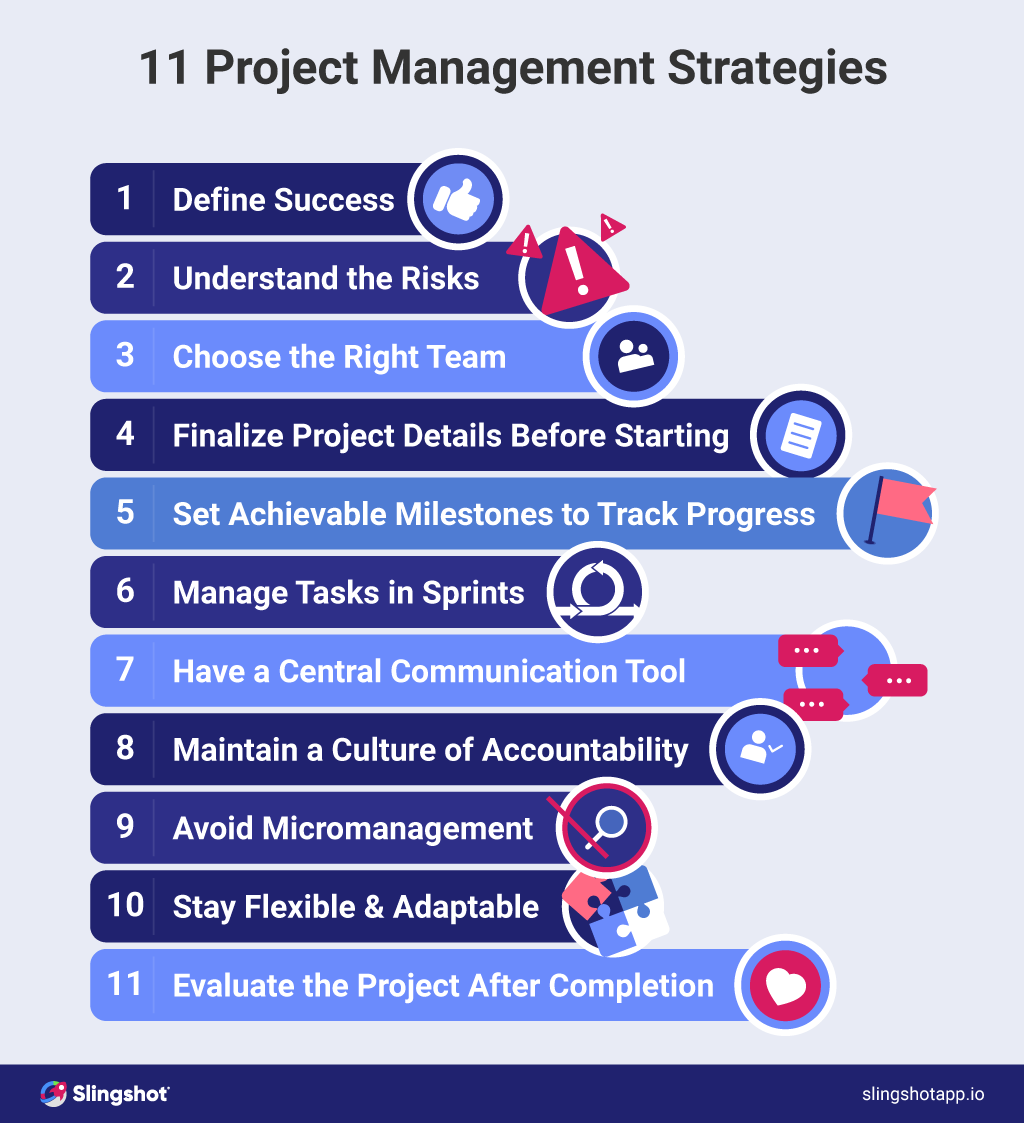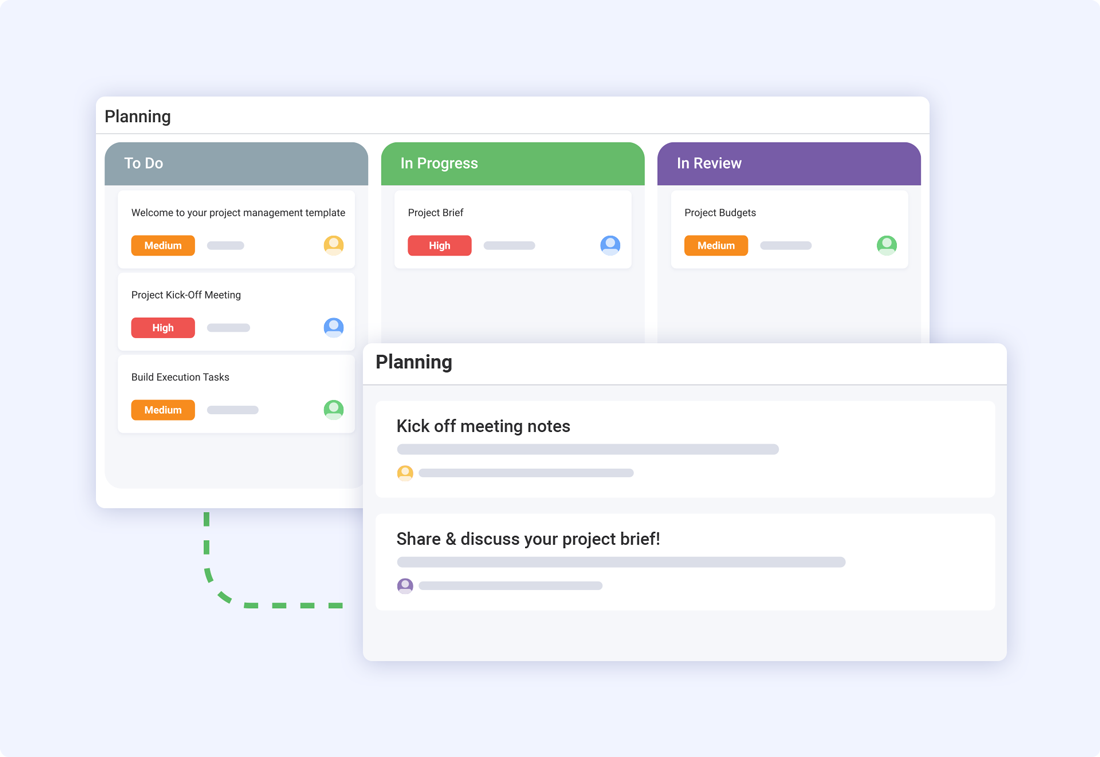
How Stephen Gould Scaled Its Capacity by 30% without Making a Single Hire
Project management can feel like juggling countless tasks, teams, and deadlines. Even with the best efforts, projects sometimes fall short—missing deadlines, exceeding budgets, or failing to meet expectations. But with the right project management strategies in place, you can bridge the gap between planning and successful execution.
In this blog, we’ll walk you through 11 actionable project management strategies that can help you drive your projects to success. From assembling the right team to fostering accountability, these strategies can be put into practice immediately to improve outcomes and keep your projects on track.
Strategic planning is the process of defining a long-term business direction, setting goals, and creating actionable plans to achieve them. It unites different departments—whether marketing, sales, or finance—around common objectives and ensures all resources and documentation are aligned.
In project management, strategic planning is vital for providing clarity and ensuring every team member understands the project’s objectives, timelines, and resource allocation.

Project management strategies are the methods and frameworks used by project managers to guide their teams toward successful outcomes. They ensure that every member understands the goals, tasks, and expectations, fostering a cohesive and productive team dynamic.
These strategies help teams stay aligned, productive, and agile. By implementing project management strategies, teams can more effectively address challenges, track progress, and reach their goals. A clear strategy enables better decision-making, streamlined workflows, and ultimately, successful project delivery.
Successfully managing and executing projects requires more than just a great idea. The following 11 project management strategies will ensure that you stay on top of every project, from start to finish:

Even if you meet deadlines and stay within budget, a project isn’t truly successful unless it achieves its intended goals. Establish success criteria from the beginning by defining the project’s scope, timeline, budget, team satisfaction, customer satisfaction, and quality standards. This clarity will guide your team throughout the project and help you assess its success at the end.
Every project comes with risks. Conduct a risk analysis at the outset to identify potential threats and create contingency plans. Being proactive allows you to manage risks effectively and reduce the likelihood of disruptions.
Selecting the right team is essential to a project’s success. Assemble a team based on the skills and expertise required for the specific project at hand. By aligning the team’s abilities with the project’s needs, you set the foundation for smoother execution.
Before you kick off a project, make sure all plans, roles, and responsibilities are clearly defined. Present these details to the team upfront to minimize confusion and eliminate the need for micromanagement. When everyone knows what’s expected of them from the start, execution is more streamlined and efficient.
Breaking down your project into smaller, measurable milestones ensures you stay on track. Regularly hitting milestones helps keep the team motivated and provides a clear view of progress. Slingshot’s Custom Fields can help you track these milestones in real-time, giving you better control over each phase of the project.
Adopt an agile approach by managing your project’s tasks in sprints—short, defined periods where specific tasks are completed. This time-boxed method ensures better time management and allows teams to focus on small, achievable tasks, which adds up to big progress. Slingshot’s Task Types feature can be customized to reflect these sprints, keeping your team organized and on pace.

Effective communication is at the heart of every successful project. Using a central communication tool helps keep conversations, feedback, and ideas flowing. Slingshot combines chat, file sharing, and task management into one platform, so teams can collaborate seamlessly and address issues quickly.
Accountability drives performance. Encourage a culture where every team member takes ownership of their responsibilities and results. Start by modeling accountability yourself—own your decisions, be open to feedback, and encourage team members to do the same.
Micromanagement stifles creativity and increases stress. Instead of hovering over every task, empower your team to take ownership of their work. Trust them to deliver, and only intervene when necessary.
Project plans should evolve as the project progresses. Stay adaptable by regularly reassessing your strategy and adjusting based on what’s working and what’s not. Being flexible enables you to respond to challenges quickly, ensuring the project remains on track.
No matter how well you plan and execute, there’s always room for improvement. After each project, take time to evaluate its success. What worked? What didn’t? What could be improved for next time? Use these insights to refine your project management strategies moving forward.
Project management software is indispensable for planning, tracking, and executing projects efficiently. It centralizes all project tasks, deadlines, and communication, making it easier for teams to collaborate and stay on the same page. With the right tool, project managers can streamline the entire project lifecycle—from inception to completion—while reducing the risk of missed deadlines or budget overruns.
Slingshot is designed to help you take your project management strategies to the next level. Whether you need to manage multiple teams, track complex timelines, or foster better communication, Slingshot provides the tools you need to drive success.
With features like Custom Fields for tailored tracking, Task Types for workflow customization, and built-in analytics, Slingshot makes it easy to manage projects in real-time. By bringing together task management, communication, and data analytics in one platform, Slingshot eliminates silos and empowers teams to collaborate more effectively.
Ready to see how Slingshot can help your team deliver extraordinary results? Try it for free today and experience the difference.
Seamlessly manage tasks, teams, and projects of any complexity from start to finish.
Use Template →